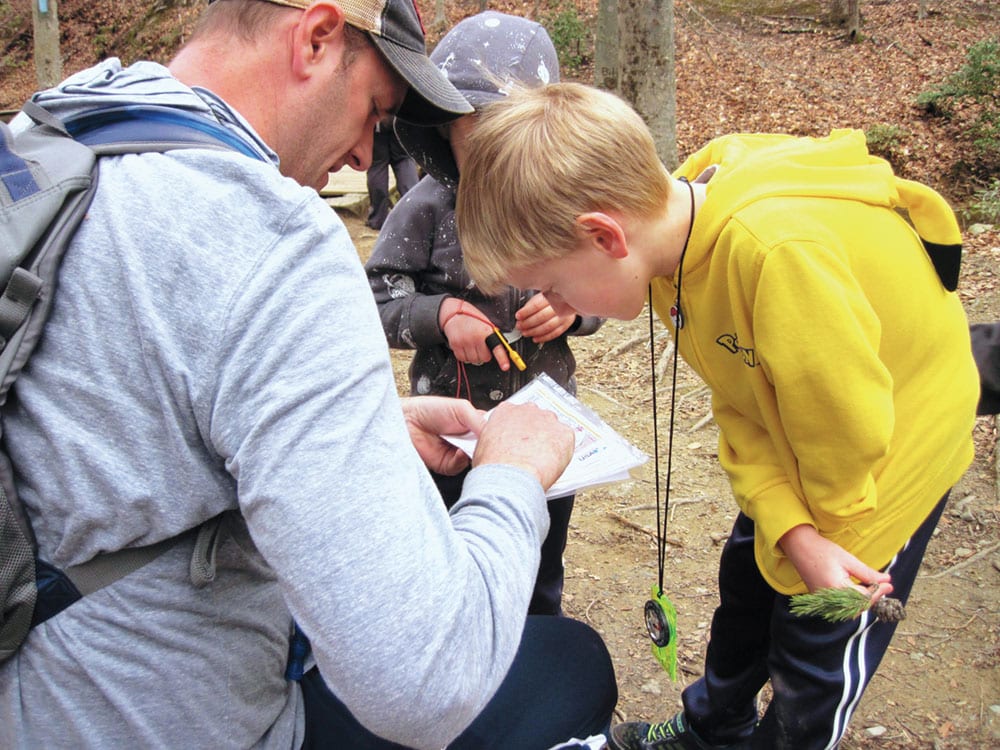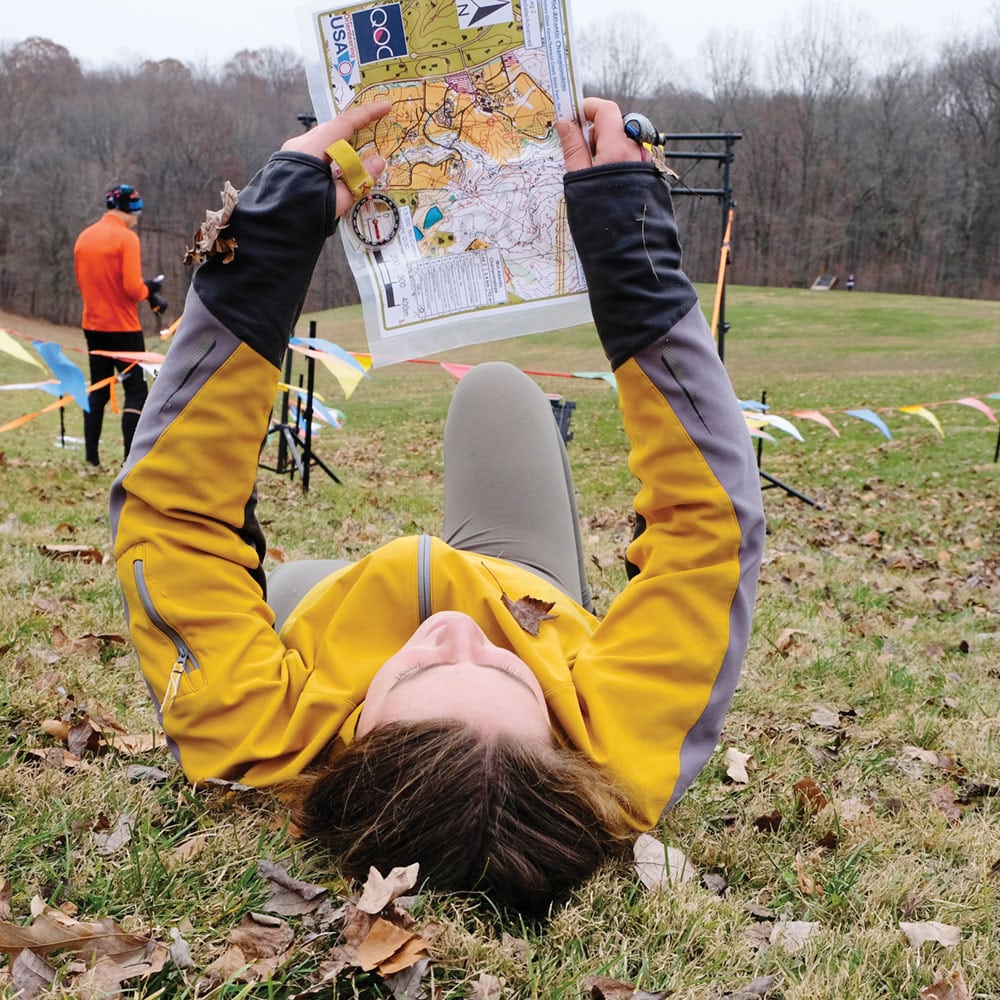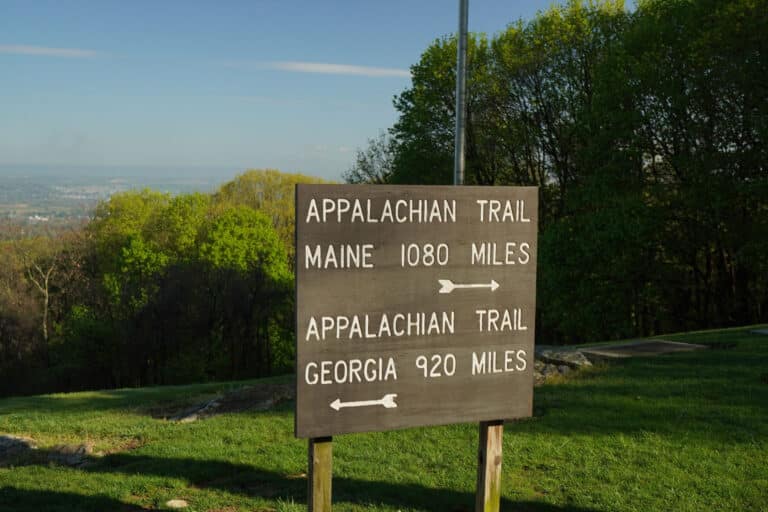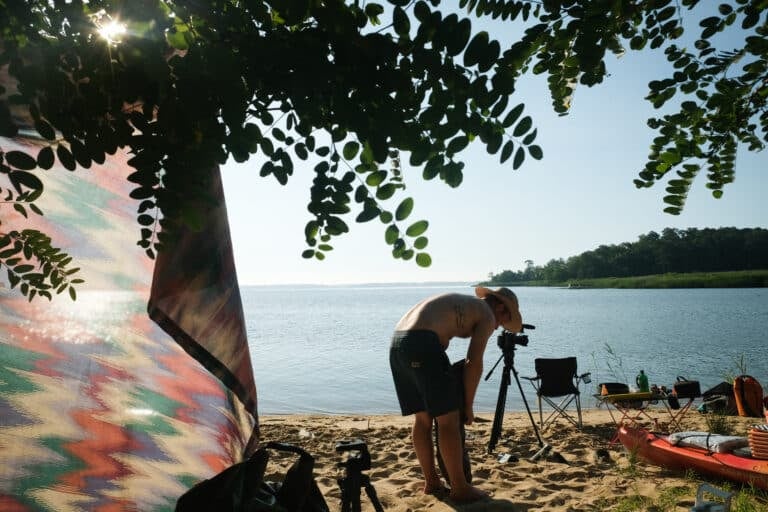When David Moss retired from the Navy, he decided to pursue his childhood dream of driving 18-wheelers. Hauling dry goods for Averitt Express up to 550 miles each day, he was able to see the country from a new perspective that his first career had not allowed: by land. He loved the freedom and the vastness, the competitive nature of the job and its reliance on maps. He drove trucks for three years and would have done it forever, he says, had Henry County High School not come calling in 2010. The school needed a Navy JROTC Instructor…and an orienteering coach.
Using a topographic map and compass, orienteering is a sport that requires participants to race through a series of designated checkpoints, or “controls,” with as much speed and efficiency as possible. Depending on the course’s level of difficulty, a participant may be tasked with following ridges, trudging up steep inclines, or navigating any number of natural features to reach each control. It draws everyone from adult adventurers to high school JROTC units. While no stranger to maps, Moss had no experience with the sport of orienteering prior to his arrival at the Henry County High, which is located in McDonough, Ga., and has since been re-named McDonough High School.
“So I had to go do my research because nobody else wanted to do it because it is very demanding,” he explains. “You have to get out there in whatever weather and make it happen.”
He started with the Georgia Orienteering Club, an organization that puts on events and competitions throughout the state. He read and attended camps during the summer, even founding his own, the Georgia Orienteering Advanced Training, or GOAT Camp, in partnership with the GOC. He built a system for coaching his teams that relies equally on classroom instruction, such as map reading and navigational skills, and on physical fitness. One day in the classroom, the next outside training.
The results have been spectacular. McDonough has won seven national championships, traveled to 12 states for competitions, and exposed many of Moss’ students to a world in which they previously had little to no experience. “I work in a school where there is 98 percent minorities, and a lot of them have never been to a state park before, so I am already exposing them to something totally new, and that’s one of my goals, to break down mental barriers and expose them to a new world and something they never thought about doing before,” says Moss.
While the tactical element of orienteering makes it a natural fit for the JROTC curriculum, it also draws adults and children who simply want to challenge themselves in the outdoors. Based in Virginia, Quantico Orienteering Club is an organization similar to the Georgia Orienteering Club. It hosts between 20 and 25 orienteering events in a given season, between September and June, in parks all over the metropolitan D.C.-Baltimore area. The Quantico district extends as far south as Quantico, Va., where they have permission to go onto the Marine Corps base, and up to the Oregon Ridge Park, north of Baltimore.

“We are eastern woodlands, so we are almost always in the woods,” explains Quantico President Don Fish. “Occasionally we are at parks with some open fields as well, and that kind of makes it interesting because you are going back and forth between different kinds of terrain.”
The challenges of a given course depend on the park. Mason Neck, located in southern Fairfax County, Va., on the Potomac River, is very flat. According to Fish, this makes it more challenging for orienteering because there are no ridges or elevated features to follow. Right across the road from Mason Neck, however, is Pohick Bay, which is conversely steep.
“Even though Pohick Bay would be physically more difficult to orienteer on, you have stronger guidelines that you can follow to find the controls, because when it’s flat and there is nothing out there, no ditches, no creeks, it’s really hard,” says Fish.
Prince William Forest or Fountainhead in Virginia and McKeldin in Maryland are also steep and contain deep ravines that can require up to 500 meters of climbing over the length of a course, but newcomers should not be daunted by the challenges of the upper-end routes. The combination of available courses and metropolitan population have made Quantico one of the largest clubs in the country, and there are options for all skill levels. Course difficulty is denoted by color. Beginners can opt to try a white course, which will keep them on a trail for the entirety of its 2-3 kilometers. Blue is the most difficult, veering into unmarked terrain and measuring 10-12 kilometers. Timing is conducted electronically, recorded upon arrival at each control and at the finish line.
Fish says nice weather might generate a turnout of 250 to 300 people for an event, many of whom are JROTC teams from the Baltimore area but may also include mountain bikers in search of a new challenge or families seeking to get into the woods.
“We have everything from little kids who are going out with their parents first and then starting at age 8 or 9 starting to do their own easy courses, to members that are in their 80s that go out and do these things,” he says.
Meanwhile in Georgia, Moss will host this year’s state championship at Mistletoe State Park near Thompson, in partnership with the GOC. He expects the event to draw nearly 25 teams, the best of which will advance to the Navy JROTC Nationals in California this year, and from there to the U.S. All Services Junior National Championship in Cincinnati, where Moss’ group are the defending champions in four of the five categories of competition. Winning is nice, but it’s the real-world implications of what he is teaching that stokes his passion.
“If a kid goes out there by themselves and they don’t have that self-discipline, that mental control to calm themselves, to refocus and commit to something, then they’re not going to be too successful,” Moss says. “So, it teaches them a whole lot of maturity, and that maturity rolls over to other things in their academic and personal lives.”
Cover photo: Map skills are essential for navigating orienteering courses. Photo courtesy of the Quantico Orienteering club







